- News
- Reviews
- Bikes
- Components
- Bar tape & grips
- Bottom brackets
- Brake & gear cables
- Brake & STI levers
- Brake pads & spares
- Brakes
- Cassettes & freewheels
- Chains
- Chainsets & chainrings
- Derailleurs - front
- Derailleurs - rear
- Forks
- Gear levers & shifters
- Groupsets
- Handlebars & extensions
- Headsets
- Hubs
- Inner tubes
- Pedals
- Quick releases & skewers
- Saddles
- Seatposts
- Stems
- Wheels
- Tyres
- Tubeless valves
- Accessories
- Accessories - misc
- Computer mounts
- Bags
- Bar ends
- Bike bags & cases
- Bottle cages
- Bottles
- Cameras
- Car racks
- Child seats
- Computers
- Glasses
- GPS units
- Helmets
- Lights - front
- Lights - rear
- Lights - sets
- Locks
- Mirrors
- Mudguards
- Racks
- Pumps & CO2 inflators
- Puncture kits
- Reflectives
- Smart watches
- Stands and racks
- Trailers
- Clothing
- Health, fitness and nutrition
- Tools and workshop
- Miscellaneous
- Buyers Guides
- Features
- Forum
- Recommends
- Podcast
 2024 Ribble Allroad SL R - Hero - riding 1.jpg
2024 Ribble Allroad SL R - Hero - riding 1.jpg£8,799.00
VERDICT:
Not a bad bike, but promises more than it delivers and doesn't quite live up to expectation
Good tyre clearance
Well priced for the spec
Internal frame storage
Average ride quality
Front end lacks directness and positivity
Wrong handlebar choice
Weight:
8,280g
Contact:
At road.cc every product is thoroughly tested for as long as it takes to get a proper insight into how well it works. Our reviewers are experienced cyclists that we trust to be objective. While we strive to ensure that opinions expressed are backed up by facts, reviews are by their nature an informed opinion, not a definitive verdict. We don't intentionally try to break anything (except locks) but we do try to look for weak points in any design. The overall score is not just an average of the other scores: it reflects both a product's function and value – with value determined by how a product compares with items of similar spec, quality, and price.
What the road.cc scores meanGood scores are more common than bad, because fortunately good products are more common than bad.
- Exceptional
- Excellent
- Very Good
- Good
- Quite good
- Average
- Not so good
- Poor
- Bad
- Appalling
The Ribble Allroad SL R Hero is the range-topper of the company's latest do-a-bit-of-everything road bike, but unfortunately that old phrase jack of all trades, master of none has never been so apt. It's a bike designed to offer versatility, to blend the highlights found across all of the road bike options on offer, but it somehow manages not to capitalise on any of them. In my opinion it's a bike with an identity crisis.
Not absolutely sure what an allroad bike is? Have a read of Jamie's feature from last year, What is an all-road bike? Is this new bike breed really an N+1 killer?
Our review bike, like all early versions of the Allroad, came with a restriction on the steering which Ribble has now removed from all new bikes, and as such, my overall thoughts hereon in, and scores of the SL R, aren't taking the bump stop or steering limitations into account, which I think is only fair. I will, though, be addressing it at the end of this review, and strongly advise that if you've got an early version of the Allroad that still has the 45-degree steering restriction, you get in touch with Ribble or the bike shop that sold it to you.
Ribble Allroad SL R Hero: Ride
Ribble offers two carbon fibre models in its Allroad line-up, which it released earlier this year. It kicks off with the Allroad SL, a decent all-rounder and a worthy choice as a year-round commuter, all of which I summed up in my review in September.
This SL R is the range-topper, available in an e-bike version – the SL R e – and standard builds, and it uses a higher grade of carbon fibre in the frame and fork. With that in mind I was hoping for a better ride quality than the SL, but unfortunately I still found it lacking in terms of rider involvement.
There is no real feedback on offer; any hope of what I'd describe as a relationship between rider and bike is non-existent. I could feel what the tyres were up to, but it was pretty muted.
It's very much a tool for the job. I got on it, I pedalled, I covered some miles and then I was home again.
This might be exactly what you like in a bike, but for me it has no real personality; it isn't a bike I could get excited about riding – and with an RRP of £8,799 for this spec I would find that a bit concerning.
There is some focus on aerodynamics, and it does feel quick when up to speed, but those chunky tubes don't help the ride quality. It's stiff, which is great for performance, but again that affects the ride quality. I wouldn't go so far as to say the frame is harsh, but it is very firm.
The geometry is endurance based, designed to offer 'all-day comfort' according to Ribble, but the short top tube and tall head tube create quite an upright riding position which goes against the whole aerodynamics thing and very stiff frame characteristics, especially when you pair those with the narrow aero handlebar that you get with this build; everything just feels at odds.
At cruising speeds the SL R feels nimble enough, although at nearly 8.3kg – bearing in mind that's with Zipp NSW wheels and Shimano Dura-Ace – it's certainly no lightweight race machine, and that's noticeable on the climbs too.
When I had reached the top of the summit and unleashed the Allroad on the descent, there was still nothing to sort of pique my interest. The tall front end made the steering feel ponderous, even when in the drops. It felt like my centre of gravity needed to be lower for the SL R to feel more balanced and poised. I'm not comparing this with a race bike either – many all-road bikes or road bikes capable of running bigger tyres I've ridden feel much better in the bends. Bikes like Mason's Resolution, Argon 18's Krypton Pro, Ridley's Grifn RS or Merida's Scultura Endurance.
For me, the Allroad SLR just misses the mark in pretty much every aspect, and while I'm not saying it's a bad bike, there are a lot of competitors that are doing it better.
Ribble Allroad SL R Hero: Frame & fork
The SL R is constructed from a mix of Toray's M46 and T1000 grades of carbon fibre, and as I mentioned above, it has a focus on aerodynamics, which Ribble says was pioneered on its Ultra platform of aero race bikes.
Things like the sleek profile of the head tube from the front, and the fact that the flared design of the down tube means the SLR is quicker with a bottle fitted than not, although to get the full benefits you'll need to add the optional Allroad-specific cages. Dropped seatstays are also employed for aerodynamic gain.
All hoses and cables are run completely internally for a smooth look, as is the seatclamp. One thing I'm not a fan of aesthetically is the squarish seatpost profile, as to my mind it just looks quirky, being much smaller in profile than the seat tube.
One benefit of the boxy down tube is that the Ribble has internal storage, just like the Argon 18 mentioned above. I'm a big fan of this as it means you don't need to stuff essentials in a jersey pocket or a saddlebag.
More versatility comes from the fact that you can add a seatstay bridge (£30), which allows you to run full mudguards, and computer mounts can be added to the underside of the stem.
The overall tyre clearance is 38mm, although that drops to 32mm with mudguards fitted.
In terms of geometry, the SL R is available in five sizes, from XS to XL, which have top tube lengths of 505mm to 585mm.
I was riding the large size which has a 565mm top tube and 180mm head tube, both of which contribute to the 391mm reach and 588mm stack figures.
The wheelbase is 1,005mm with 415mm chainstays and a front centre measurement of 580mm. Angles-wise we're talking 73 degrees for the head tube and 73.5 for the seat.
Ribble Allroad SL R Hero: Finishing kit
This Hero model is fitted with Shimano's top-flight Dura-Ace R9200 groupset, which as you can read in our separate review, is very impressive, if expensive.
The gear shifting is very precise, and very light too, even when shifting under load, while the braking performance is among the best out there – really powerful stuff with heaps of modulation through the callipers and 160mm rotors.
Gearing-wise the Hero comes with a 50/34T compact chainset paired to an 11-30T cassette, which gives a sensible spread of ratios for this style of bike. Nothing too tall that is going to tire the legs on a long ride or going to make you overgeared on hilly terrain, but it won't leave you spinning out either when using the 50x11 combination.
For the cockpit Ribble specs an alloy stem which runs the hoses down through the head tube and headset. It's not the best-looking component in my eyes, but it does its job well.
The handlebar is Ribble's latest UB-2, which is basically a standard carbon bar with a fairing attached, as you can see from the photo below, taken while bleeding the brakes.
I kind of like the shape – I found the curved section at the hoods very comfortable – but it is so slippery if you have wet hands and aren't wearing mitts. I had a few instances where my hands slipped off when I hit rough road sections when it was raining or my palms were sweaty.
Also, the drops have a kind of sandpaper effect to them so you can use them without bar tape. It's another nod towards Ribble's race machines, but a bit pointless on this all-road bike. As you can see from our pictures, one of the first things I did was add some bar tape after the shortest of first rides.
At 38cm it follows current trends for a race bike handlebar width, but I think it is way too narrow for this kind of all-road bike. For all-day riding, or when riding on surfaces looser than tarmac, you want a bar that's wide enough to keep the front end feeling steady and easily under control. A bar this narrow just makes the steering quicker and twitchier than it needs to be; pair that with the lack of feedback through the frame and it's not a great combination.
One bit of kit that does get a big thumbs-up from me is the Selle Italia SLR Boost 3D Kit Carbonio Superflow saddle. The name might not flow off the tongue, but it is so comfortable, and one of my favourite saddles after I reviewed it back in 2023.
For the wheels, the bike reviewed here has the optional upgrade to Zipp's 353 NSW over the standard Zipp 303s.
I reviewed the 353 NSWs last year and was impressed with their performance and low weight, although I personally prefer hooked rims over the Zipp's hookless offerings. They add massively to the price of the overall bike, though, and I'm not sure it's an upgrade I'd bother to make.
Pirelli's P Zero tyres are very much welcomed though. I'm a big fan of this tyre. I love the way they feel – they are quite supple so give plenty of feedback while doing a good job of absorbing road imperfections.
I'd say they are ideal if you are only going to use the Allroad on the road, because if you want something that can deal with multiple terrains then you'll probably want something a little more robust.
Ribble Allroad SL R Hero: Pricing & value
The Allroad SL R is available in four off-the-shelf builds, but Ribble also offers customisation within those builds.
They start with the £2,599 Sport model, which is based around a Shimano 105 mechanical groupset, while the Enthusiast makes the jump to 105 Di2 for £3,199. The Pro gets Ultegra Di2 and Mavic's Cosmic 42 carbon wheels for £4,599, and this Hero version gets Dura-Ace Di2 and Zipp 303 wheels for £6,999. All have finishing kit to suit the price ranges.
As I said earlier, our specific bike here has an upgrade to Zipp's 353 NSW wheels (£1,800 extra), which brings the total price up to £8,799. You can also choose different paintjobs, with solid and metallic paints costing an extra £350, and flip paints £400.
Stick with the 303s on the standard build and for that £6,999 you are also getting that Selle Italia 3D printed saddle and carbon bar, so a good spec for the money. In fact, the whole range is well priced.
How does it compare with the bikes I mentioned above? Well, the Argon 18 Krypton Pro will cost you £7,000 with Ultegra Di2 and high-end Hunt carbon wheels, so an expensive rival to the SL R Pro with an upgrade to Zipp 303s for £4,999.
The Ridley Grifn RS starts at £5,299 for 105 Di2 and £7,299 for Ultegra Di2, so both of those are much more expensive.
Merida's Scultura Endurance is designed for all-day comfort and comes with 38mm tyre clearance just like the Ribble Allroad. The range tops out with the Endurance 9000 which comes with Ultegra Di2, a carbon integrated cockpit and Reynolds carbon wheels for £4,750. That's on a par with the Ribble in a similar spec, but if you read my review of the Merida, you'll see how much I liked the ride quality of its frame.
Giant's Defy models aren't classed specifically as all-road bikes, but again they have room for 38mm tyres and come with geometry that is designed for endurance riding. Both the Defy Advanced 1 we reviewed in 2023 and the Advanced SL 0 in 2024 scored 9/10 from separate reviewers.
Current pricing shows that a Defy Advanced Pro 0 with Ultegra Di2 (including power meter) and Giant deep-section wheels will set you back £5,999, so a fair chunk of cash more than the equivalent Ribble.
At the lower end of the range, the Advanced 0 with 105 Di2 comes in at £3,699, so £500 more than a similarly equipped SL R, but you do get carbon fibre wheels for the money. Add a set of the Mavic Cosmic 42 carbon wheels to the Ribble on the configurator for a like-for-like and the price jumps to £3,999.
However, with the likes of Giant and Merida, as the prices rise in the range you are getting a higher spec frame, which affects the overall price. But the Ribble uses the same frame, from the entry-level build right up to the top spec, and I don't think the SL R frameset benefits from having the level of kit on it like Dura-Ace and Zipp's NSW wheels.
Ribble Allroad SL R Hero: Conclusion
I think my last sentence above sums up this Allroad SL R Hero. It feels like quite a basic frame draped in high-end kit. I think you would be getting more bike for your money if you were looking at the lower priced builds, but still other bikes like those from Giant and Merida will give you a better ride quality right across the range.
Steering restrictions
If you've seen early versions of the SL R (or the SL R e – the e-bike version which used the same design) in the flesh, or you happen to own one, you'll know that there is – or was – a restriction on how far you can turn the handlebar, affecting the turning circle. I didn't measure it, but you can probably turn the bar by about 45 degrees in each direction and that's it.
I have to say, it's something that I find utterly ridiculous to design into a bike, especially a bike aimed at 'road+' as Ribble calls it.
Okay, 99% of the time it's not a huge issue. Even travelling at a moderate speed, leaning and small inputs to the handlebar allow you to make most turns without issue. But what about that 1% when it is an issue? What happens when things do go pear-shaped?
To me, road+ says this bike can be ridden on towpaths and hardpacked gravel trails, the sort you might find when skirting around towns and cities to take you away from traffic, both of which tend to have barriers creating chicanes to stop motorised traffic from using them – bits of furniture I can normally negotiate on any bike but would have to get off the Allroad SL R to navigate...
Also, at some point on any of my rides I have to ride through an urban area that's usually full of traffic. The limit on the steering makes filtering sketchy at best and trackstands at the lights a challenge.
So, the scenario: I'm coming up to a small roundabout on the SL R e and I've got a driver heading towards me from the junction straight across; she's positioned in the left-hand lane, meaning her only option is the exit I'm leaving, and we've even made eye contact.
I shield the brakes but, being confident we aren't going to meet, I go to roll through the roundabout, and then she excels herself by deciding that the right-hand exit is the one she wants, and with no indication whatsoever turns right across my path.
Not a problem, I've got myself out of worse scrapes before, so as I scrub off some speed, I turn hard right to aim the bike to go around the back of the car as it passes in front of me and buy myself a few extra seconds avoiding a collision. Only that won't work because the bloody bike won't give me the amount of lock I need to avoid the car!
Turning left isn't an option either, to try to go in the same direction as the car, as the limited steering will still mean I'll hit it. The only option left is to go hard on the brakes, and the next thing I know I'm catapulted over the handlebar.
I know what some of you are thinking – heavy-handed braking using those pesky disc brakes – but trust me, I've never locked up a front wheel on a bike and that wasn't about to happen here.
To limit the steering range, Ribble added a groove into the top of the fork crown where it sits against the bottom of the head tube. On the underneath of the head tube sits a pin which runs in the groove on the fork, a bump stop if you like, and when it reaches the end of the groove you can't turn the handlebar any further.
Unfortunately for me, that bump stop cut into the carbon of the fork as it hit the end of the groove and completely jammed the steering, which is what threw me over the bar so quickly that I didn't even have time to put my hands out or even unclip until I hit the floor.
So, not only did the steering design stop me from getting out of a situation that 99% of other bikes could, it also sent me to A&E.
It wasn't the first time that the bump stop had damaged the carbon on the fork, either. Both the SL R e and this SL R showed signs of damage either side of the fork groove where the bump stop had hit them.
I spoke to Ribble before I wrote the review to get some feedback, and was given this official response: "The bike being ridden was a pre-production bike, with an earlier version of the bump-stop device that was refined for final production. The primary reason for the bump stop being fitted was to avoid carbon on carbon impact if the bars came into contact with the frame. For final production the bars now ship taped and as a result the bump stop has been removed."
Personally, I think that's a great result. Early production models had a modified larger bump stop fitted, which shouldn't cut into the fork like it did on our test bike, but even so, as I said earlier, I think the whole idea of restricting the steering range is ridiculous, regardless of what size or shape the bump stop happens to be.
Verdict
Not a bad bike, but promises more than it delivers and doesn't quite live up to expectation
road.cc test report
Make and model: Ribble Allroad SL R - Hero
Size tested: Large, 565mm
About the bike
List the components used to build up the bike.
STI levers: Dura Ace Di2 R9270
Brakes: Dura Ace, 160mm rotors
Chainset: Dura Ace 50/34T
Cassette: Dura Ace 12spd 11-30T
Front Mech: Dura Ace Di2
Rear Mech: Dura Ace Di2
Seatpost: Ribble carbon fibre
Saddle: Selle Italia SLR Boost 3D Carbonio Superflow
Handlebar: Ribble UB-2 Carbon
Stem: Ribble RS-2
Bottom Bracket: Shimano BBR60
Wheelset: Zipp 353 NSW
Tyres: Pirelli P Zero TLR
Tell us what the bike is for and who it's aimed at. What do the manufacturers say about it? How does that compare to your own feelings about the bike?
Ribble says, "Marking a new era in performance and versatility, redefining what you can expect from a high-end carbon road bike. Market-leading carbon construction, world-class aerodynamic innovation, and integrated frame storage come together in a bike designed to let you take on mixed-terrain routes without compromising your performance on the road. We call this approach Road+ and we invite you to redefine your limits."
I think it is a bike full of compromises, regardless of what terrain you are on.
Where does this model sit in the range? Tell us briefly about the cheaper options and the more expensive options
This Hero model is the top-level spec, with the Pro, Enthusiast and Sport sitting below.
Frame and fork
Overall rating for frame and fork
8/10
Tell us about the build quality and finish of the frame and fork?
The build quality and finish look to be to a high standard.
Tell us about the materials used in the frame and fork?
The frame and fork use a blend of different grades of Toray's carbon fibre composites.
Tell us about the geometry of the frame and fork?
The geometry is kind of endurance based, with a lengthier wheelbase to bring stability when away from smooth tarmac.
How was the bike in terms of height and reach? How did it compare to other bikes of the same stated size?
The front end is tall, and when paired to the shortish top tube you get quite an upright, relaxed position.
Riding the bike
Was the bike comfortable to ride? Tell us how you felt about the ride quality.
I didn't find the ride quality that good. There is minimal feedback and you get a very firm ride.
Did the bike feel stiff in the right places? Did any part of the bike feel too stiff or too flexible?
The stiffness on offer is absolutely fine for hard efforts.
How did the bike transfer power? Did it feel efficient?
The stiffness throughout the frame makes the Ribble reasonably efficient, but it's no lightweight build so it's not as nimble or sprightly as a lot of bikes with this sort of spec.
Was there any toe-clip overlap with the front wheel? If so was it a problem?
No.
How would you describe the steering? Was it lively neutral or unresponsive? Neutral, subdued.
Tell us some more about the handling. How did the bike feel overall? Did it do particular things well or badly?
The handling is balanced and as it should be in terms of speed for this type of bike, although the lack of feedback from the bike just means everything feels a little vague and subdued.
Which components had the most effect (good or bad) on the bike's comfort? would you recommend any changes?
I love the Selle Italia saddle for comfort, but the handlebar has many compromises.
Which components had the most effect (good or bad) on the bike's stiffness? would you recommend any changes?
The Zipp wheels are impressive in terms of lateral stiffness.
Which components had the most effect (good or bad) on the bike's efficiency? would you recommend any changes?
The low weight of the wheels aids acceleration, and the grip of the tyres allows you to push hard into the corners without fear of them giving way.
Rate the bike for efficiency of power transfer:
7/10
Rate the bike for acceleration:
7/10
Rate the bike for sprinting:
7/10
Rate the bike for high speed stability:
7/10
Rate the bike for cruising speed stability:
7/10
Rate the bike for low speed stability:
7/10
Rate the bike for flat cornering:
7/10
Rate the bike for cornering on descents:
6/10
Rate the bike for climbing:
7/10
The drivetrain
Rate the drivetrain for performance:
9/10
Rate the drivetrain for durability:
8/10
Rate the drivetrain for weight:
8/10
Tell us some more about the drivetrain. Anything you particularly did or didn't like? Any components which didn't work well together?
Shimano Dura-Ace is a pro-level groupset so it's no surprise that it works excellently.
Wheels and tyres
Rate the wheels for performance:
9/10
Rate the wheels for durability:
8/10
Rate the wheels for weight:
9/10
Rate the wheels for comfort:
8/10
Tell us some more about the wheels.Did they work well in the conditions you encountered? Would you change the wheels? If so what for?
Lightweight wheels that offer impressive performance and drop some grams from the SL R's overall weight, though personally don't think the extra £1,800 for the upgrade from the standard Zipp 303s is worth the extra money on a frameset like this.
Rate the tyres for performance:
9/10
Rate the tyres for durability:
8/10
Rate the tyres for weight:
8/10
Rate the tyres for comfort:
8/10
Tell us some more about the tyres. Did they work well in the conditions you encountered? Would you change the tyres? If so what for?
Grippy, fast-rolling tyres that provide confidence in the bends. Unfortunately the lack of feedback from the SL R's frame limits the benefits.
Controls
Rate the controls for performance:
6/10
Rate the controls for durability:
8/10
Rate the controls for weight:
7/10
Rate the controls for comfort:
6/10
Tell us some more about the controls. Any particularly good or bad components? How would the controls work for larger or smaller riders?
A real mixed bag here. The saddle is excellent in all aspects, but I really think this is the wrong handlebar for this kind of bike.
Your summary
Did you enjoy riding the bike? Not really.
Would you consider buying the bike? No
Would you recommend the bike to a friend? No
How does the price compare to that of similar bikes in the market, including ones recently tested on road.cc?
On price alone, the SL R looks competitive against many brands. My feelings, though, are that many bikes that are more expensive than the Ribble offer a much better ride quality, which in my mind is worth paying a bit extra for.
Rate the bike overall for performance:
6/10
Rate the bike overall for value:
6/10
Use this box to explain your overall score
The saving grace of the Allroad SL R is the price; it's not a bad bike overall, but it promises more than it delivers and there is nowhere that the Ribble stands out – it's above average, just a bit middle of the road, hence the score.
About the tester
Age: 44
I usually ride: This month's test bike My best bike is: B'Twin Ultra CF draped in the latest bling test components
I've been riding for: Over 20 years I ride: Every day I would class myself as: Expert
I regularly do the following types of riding: time trialling, commuting, club rides, sportives, fixed/singlespeed,
Since writing his first bike review for road.cc back in early 2009 senior product reviewer Stu has tested more than a thousand pieces of kit, and hundreds of bikes.
With an HND in mechanical engineering and previous roles as a CNC programmer/machinist, draughtsman and development engineer (working in new product design) Stu understands what it takes to bring a product to market. A mix of that knowledge combined with his love of road and gravel cycling puts him in the ideal position to put the latest kit through its paces.
He first made the switch to road cycling in 1999, primarily for fitness, but it didn’t take long for his competitive side to take over which led to around ten years as a time triallist and some pretty decent results. These days though riding is more about escapism, keeping the weight off and just enjoying the fact that he gets to ride the latest technology as part of his day job.
Latest Comments
- Aluminium can 4 hours 57 min ago
While I always have lights on day and night and wear fluro, I have a friend that wears all black all the time and doesn't use lights ever. His...
- eburtthebike 7 hours 1 min ago
A sad case, and one with no winners. The driver can thank her lucky stars that the cyclist wasn't more seriously injured and that the court was...
- AidanR 7 hours 58 min ago
Bloody hell... How are you doing now?
- ktache 8 hours 6 min ago
And I liked endura too. Got a nice long sleeve mostly merino long sleeve a little while back, in orange.
- matthewn5 8 hours 34 min ago
No, the Ebay lights have been around for several years, this Lezyne light just appeared.
- chrisonabike 8 hours 50 min ago
They shouldn't worry - the second part of the "tariff" refrain is "they can make it in US and they'll do very well".
- Mr Blackbird 9 hours 23 min ago
"At the going down of the sun, it will get in our eyes and cause us to crash into things."
- Rendel Harris 9 hours 31 min ago
Been living in the area thirty years now and Brixton Cycles (and local riders wearing their famed Rastafarian colours jersey) has been an iconic...
- chrisonabike 14 hours 26 min ago
Indeed - but again these are perhaps questions we should keep asking. Even if the immediate answer is "well we are where we are" or "how on earth...
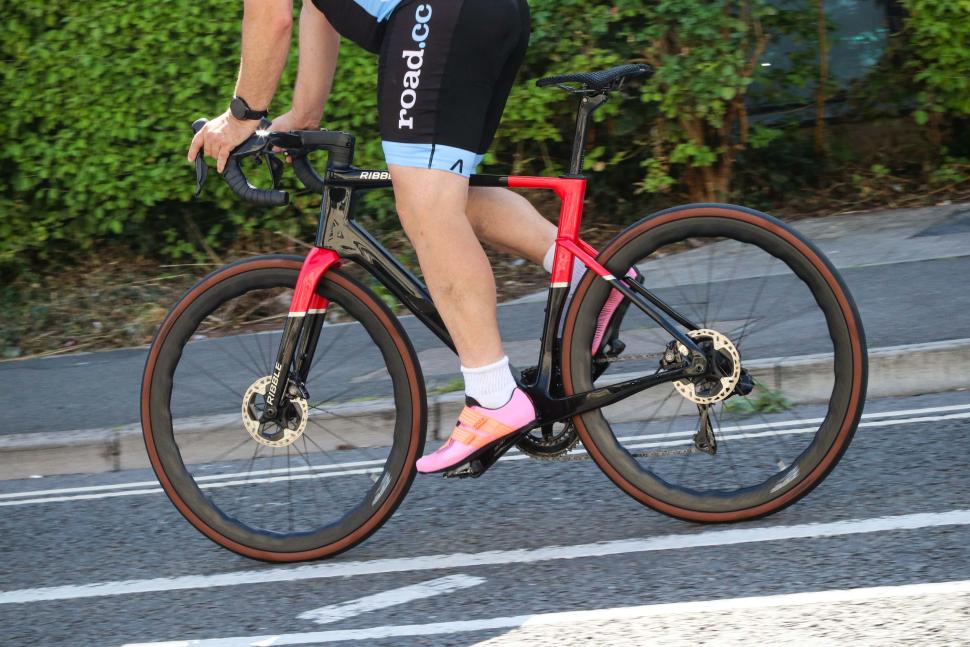


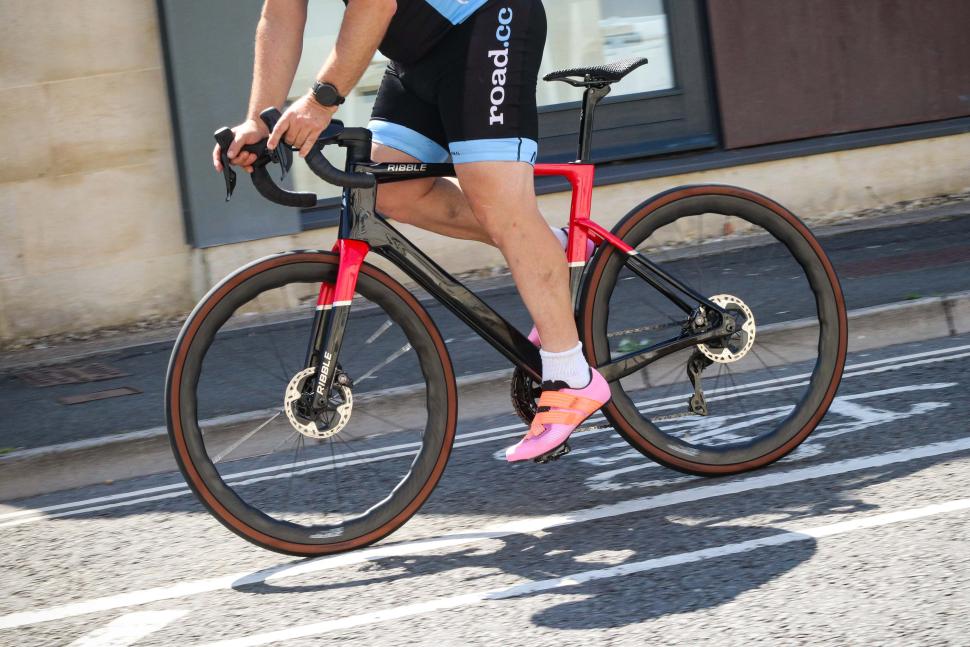
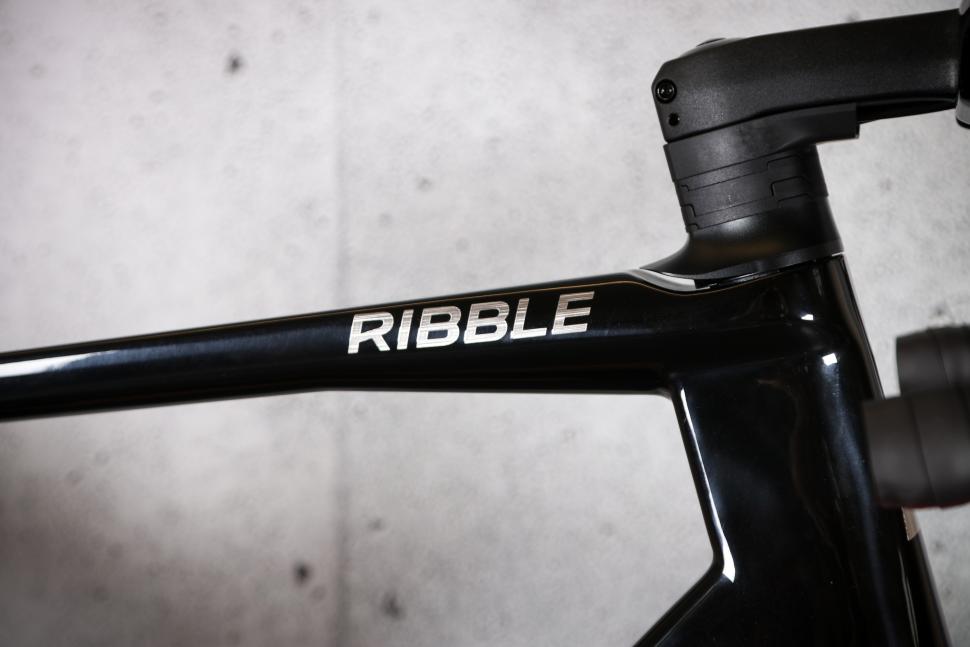

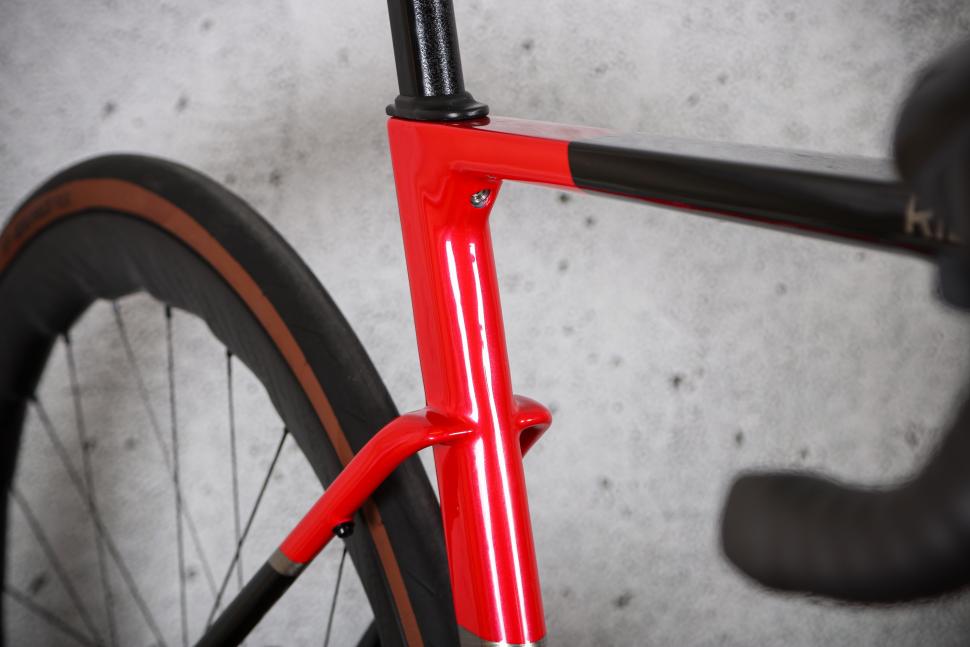


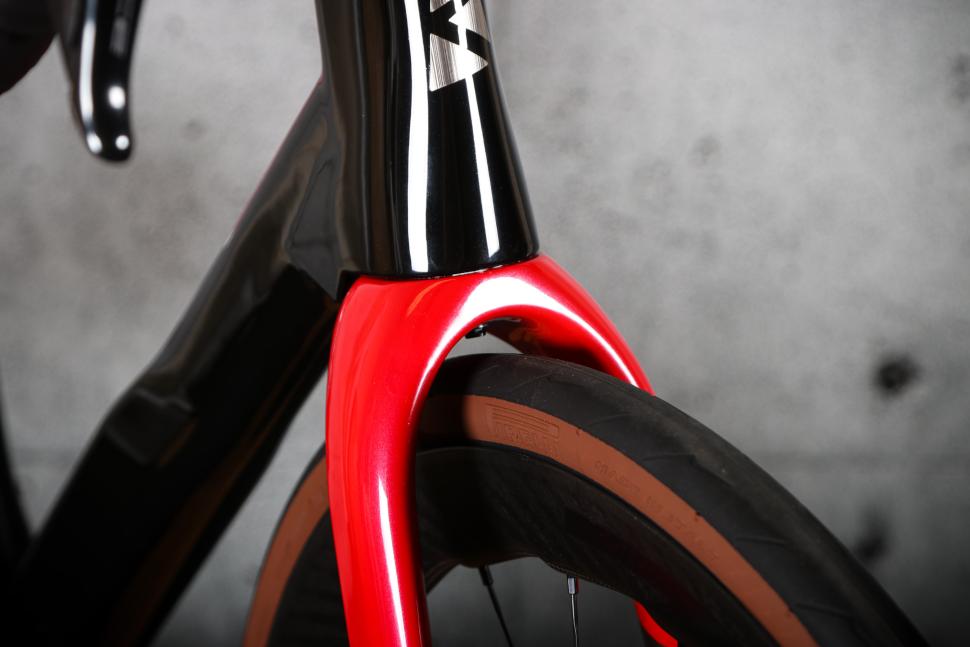
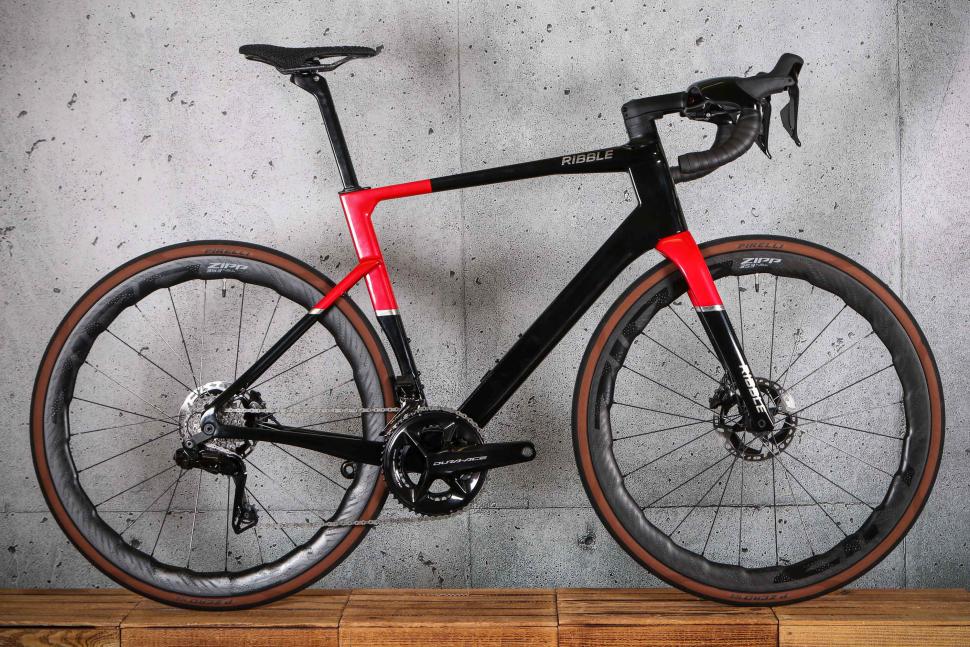

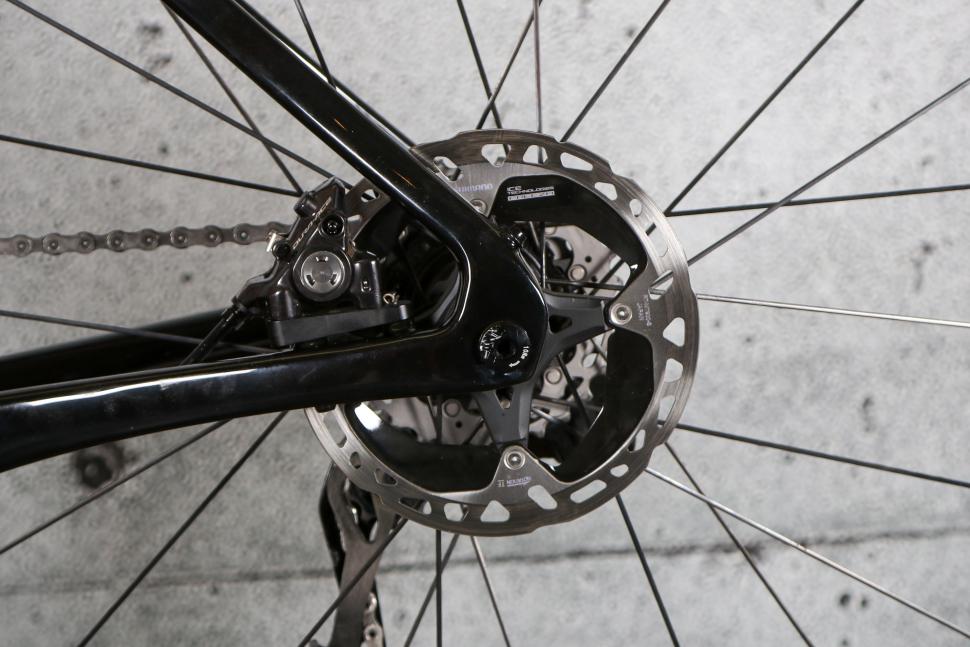
















































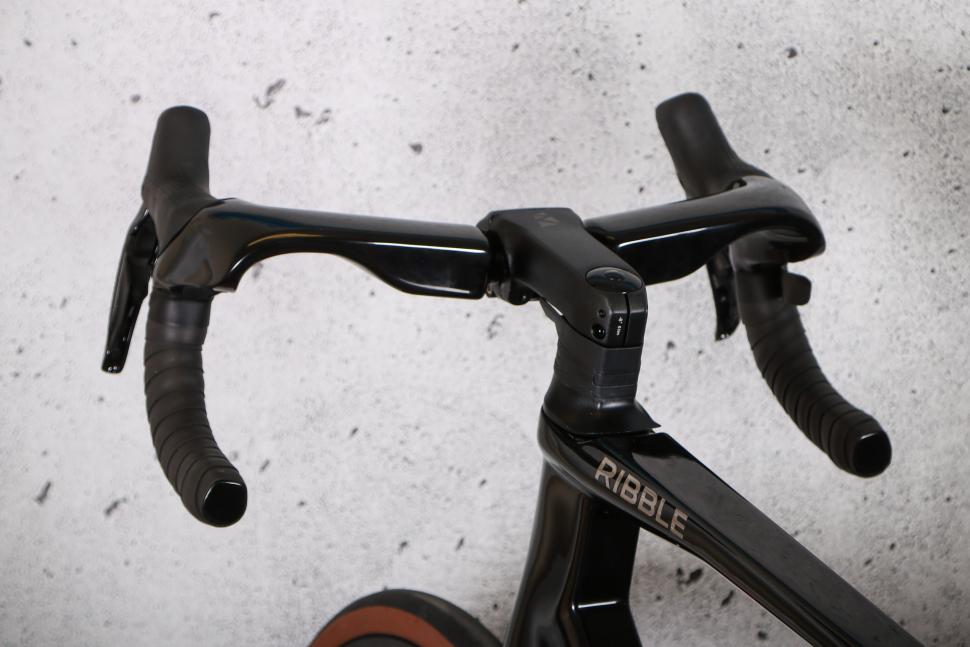
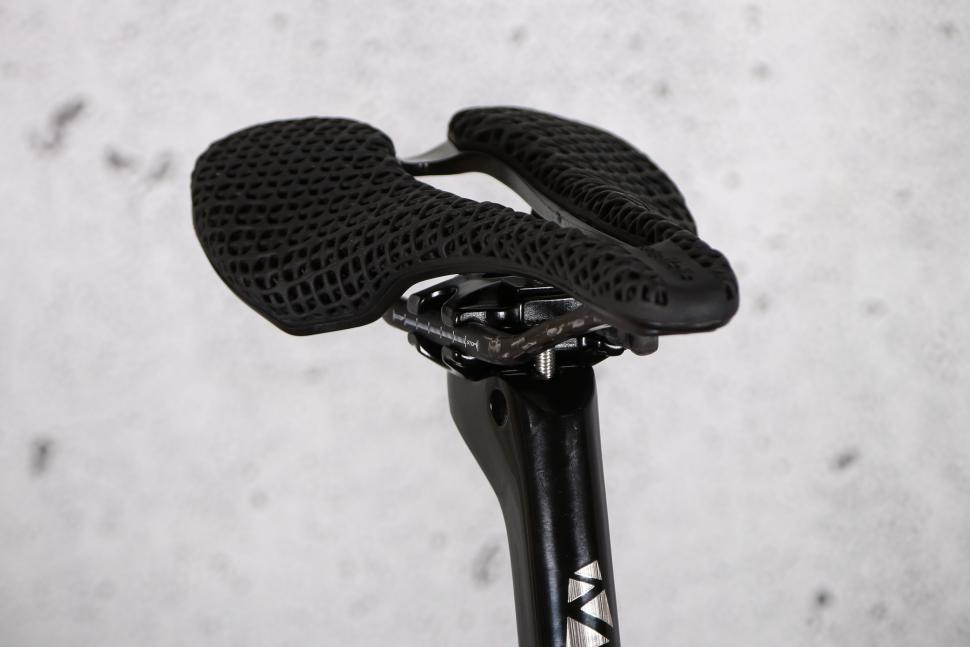



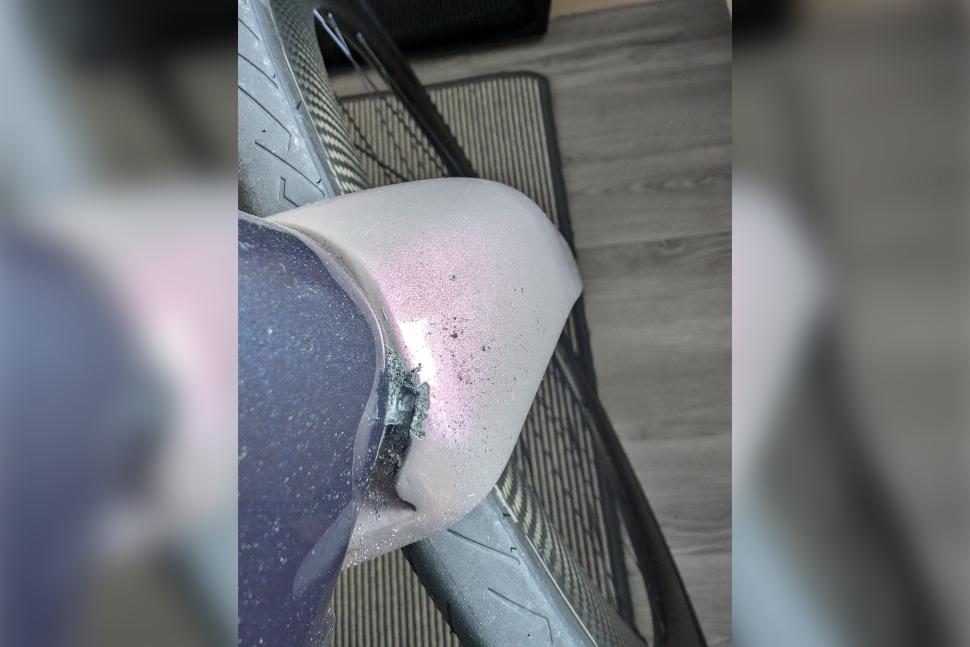




Add new comment
4 comments
A friend in my cycling club has a new Ribble Allroad, I think the model with 105, and when I asked how he was finding it (before reading this review) said sadly that it felt rather 'dead' to ride. Sounds like a bit of a dud, shame.
Is he returning it? 30 days returns policy at Ribble.
I think reviewer completely missed the point here trying to match bike's name with what it can do. Ribble is naming it's bike weirdly, the Endurance is pure racing machine, low and aggresive, Allroad is endurace bike, sitting between race and endurance category of bikes. It is hard to argue with reviewers subjective opinion about riding it and feel, I for instance, after week of riding Specialized Tarmac, not the S-works, had a bad opinion of it and many people love it, so subjective and very personal. Allroad SLR geometry is less relaxed than the Grifin and Scultura, reviewer likes so much and if Allroad has a tall front end what about Grifin, Scultura, Roubaix, Astra with much higher stack? Even SuperSix Evo,pure racing bike has a stack only 1cm less than Allroad and sits bang in the middle between pure racers like Tarmac, Dogma, TCR, Ultimate and Allroad, Endurace and Roadmachine if we compare stack, reach and wheelbase. Make no sense what reviewer wrote. Allroad should be compared to Canyon Endurace and BMC Roadmachine rather to Grifin, Scultura as the latter are pure endurance bikes and Allroad, like Endurace and Roadmachine is endurace bike, sitting in between race and endurance. As for slippery handlebar, all bikes with one piece cockpit have the same problem as bars are not fully taped. To summrise my review of reviwer's review, i can only say it smells, looks and sounds like a biased review.
Every review is, by definition, biased. Including yours above.
Reading it, I would guess you're either a Ribble owner or employee.